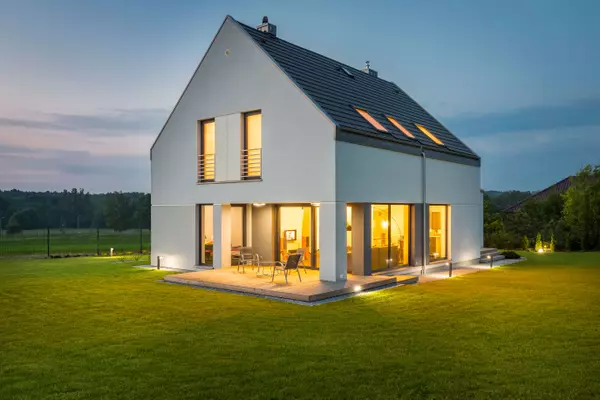County will also evaluate subsidy for Midway Rising’s sports arena project
San Diego County will consider subsidizing the Midway Rising project in order to make possible the construction of thousands of rent-restricted apartments on the city’s sports arena site in the Midway District.
Wednesday, the San Diego County Board of Supervisors voted unanimously to study the prospects of participating in an Enhanced Infrastructure Financing District or EIFD.
The board action, proposed by Supervisor Terra Lawson-Remer, means the county will join the city of San Diego in evaluating whether they should create a tax increment financing district to help pay for public infrastructure associated with the Midway Rising redevelopment project. The action does not obligate the agency to participate.
With an EIFD, participating public agencies give their share of future property tax revenue generated by a project to a special district. The money can then be used to finance public facilities and other improvements such as parks, libraries, child care centers, roads, transit centers, wastewater systems and affordable housing, as identified by a public financing authority formed to oversee the district.
“I’m excited about the possibilities around affordable housing, because it’s so important for each of our regions, but I’m also really focused on ensuring we have the investments we need to protect the quality of life and character of our community in Point Loma and Midway,” Lawson-Remer told the Union-Tribune. “We know that in order for this project to move forward, there is going to have to be an EIFD component that comes from the county as well as the city.”
The county’s consideration comes as the city and the Midway Rising development team negotiate a ground lease and development deal for the city’s 48-acre property at 3220, 3240, 3250 and 3500 Sports Arena Blvd.
In September 2022, San Diego City Council members selected Midway Rising to redo the sports arena real estate. The selection was based on Midway Rising’s promise to set aside 2,000 of the project’s units for low-income households earning 80 percent or less of the area median income — or what the state defines as affordable housing. The commitment is now an obligation memorialized in the team’s negotiation contract with the city.
Midway Rising is composed of market-rate housing developer Zephyr, affordable housing builder Chelsea Investment Corp., and sports-and-entertainment venue operator Legends. The Kroenke Group, a subsidiary of billionaire Stan Kroenke’s real estate firm, is the entity’s lead investor and limited partner.
The project, currently in the midst of a state-mandated environmental review, calls for 4,250 total residential units, a 16,000-seat replacement arena, 130,000 square feet of commercial space, and an unspecified number of acres of parks, plazas and public space.
Enhanced Infrastructure Financing Districts were enabled in California in 2014, two years after the dissolution of redevelopment agencies. They do not require voter approval. They are formed by one or more of the affected taxing entities and governed by their own boards.
In March, San Diego City Council members agreed to explore the formation of an EIFD for the project. At the direction of supervisors on Wednesday, county staff will participate in the evaluation process, which includes analyzing the project’s financial assumptions.
If the parties decide to form an EIFD, they would forgo their respective share of future property tax dollars, above an established baseline, on land assessed within the district’s boundaries. The district’s boundaries will likely match the project’s boundaries, although nothing has been formalized.
The tax increment dollars collected by the special district could be used to pay the debt service on bonds issued against the anticipated revenue or be applied to specific infrastructure projects.
“(The property tax money is) diverted to support the bonds,” said Norm Miller, emeritus professor of real estate finance at the University of San Diego. “The property taxes will be paid over the next 20 to 30 years. But I can borrow against that stream of income for the property taxes now, if I’m the county and the city. That gives me a chunk of money to help pay for infrastructure.”
It’s unclear how much money is on the table, but the tax increment is money that would otherwise go to the city’s and county’s general funds.
The EIFD would help offset construction costs, making possible the unprecedented sum of subsidized units included in the Midway Rising project, the developer has said.
“Midway Rising greatly appreciates Vice Chair Lawson-Remer for bringing forward this action, which supports affordable housing in the San Diego region,” said Jeff Meyer, who is a spokesperson for Midway Rising. “It is exciting to see city and county leadership agree that this project deserves to explore innovative solutions that will transform the Midway District into a vibrant center of entertainment and housing that is so desperately needed. This is the type of leadership that makes a real difference in our community.”
The county is likely to benefit from the EIFD, according to the letter by Lawson-Remer recommending board action.
The subsidy would support the creation of thousands of temporary and permanent union jobs, as well as make possible neighborhood improvements, the letter states. What’s more, the investment would help the county and city advance its collaborative effort to build 10,000 affordable housing units on public land, according to the letter.
Lawson-Remer, whose district includes the project area, also wants the county to participate so that the agency can have say in public infrastructure and amenities. The supervisor said she is most interested in creating park space, alleviating traffic congestion and establishing a connection to the San Diego River park area just north of the site. Her board letter also identifies storm water, sewage and flood control infrastructure as priorities.
Although he voted in support of the item, Supervisor Jim Desmond said he did not like the idea of the county giving up its tax increment revenue to help fund the project.
“That money would go to our emergency services, behavioral health, some parks,” he said. “If the project doesn’t pencil, they shouldn’t do it or they should build something different. This should be on the city. When you talk about traffic and circulation and parks and infrastructure. Why are we providing that for the city? That’s on them and the developer that comes.”
EIFDs are growing in popularity. In 2017, San Diego’s City Council established an EIFD for the entirety of the Otay Mesa community plan area to pay for infrastructure associated with the region’s massive growth. The city and county are also in the process of forming an EIFD to raise money for upgrades to the San Diego River.
Categories
Recent Posts










GET MORE INFORMATION


